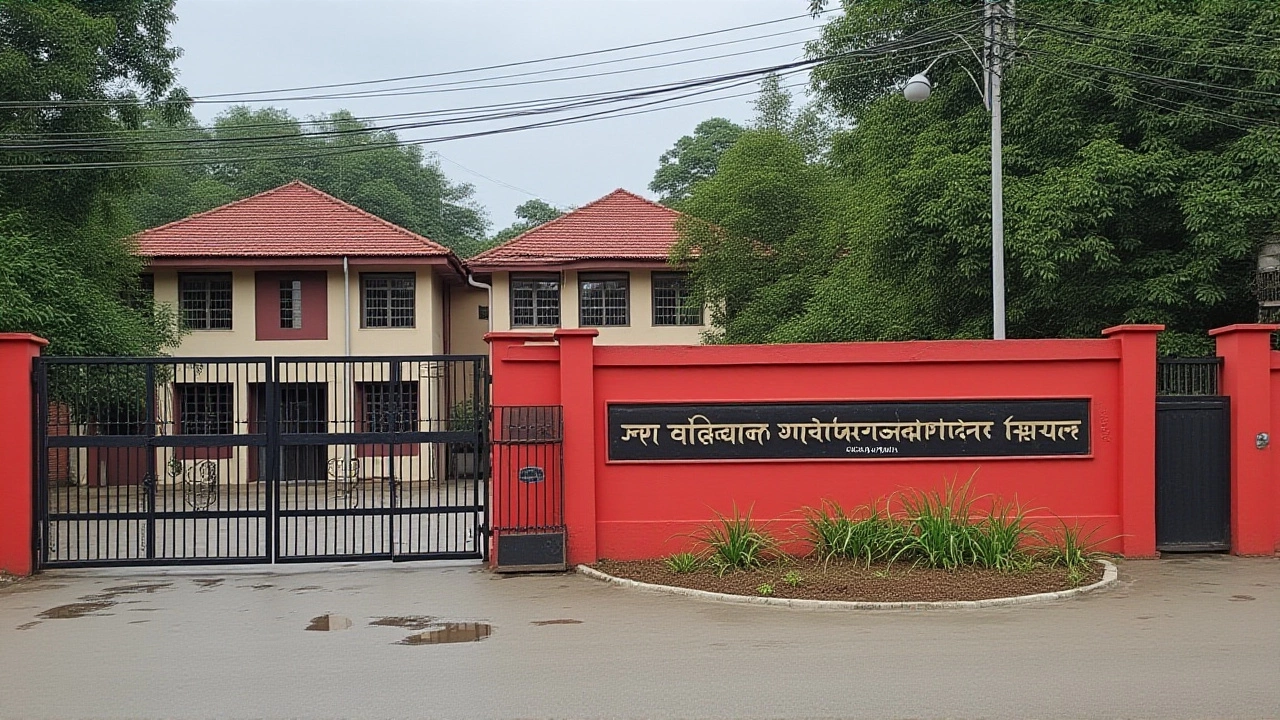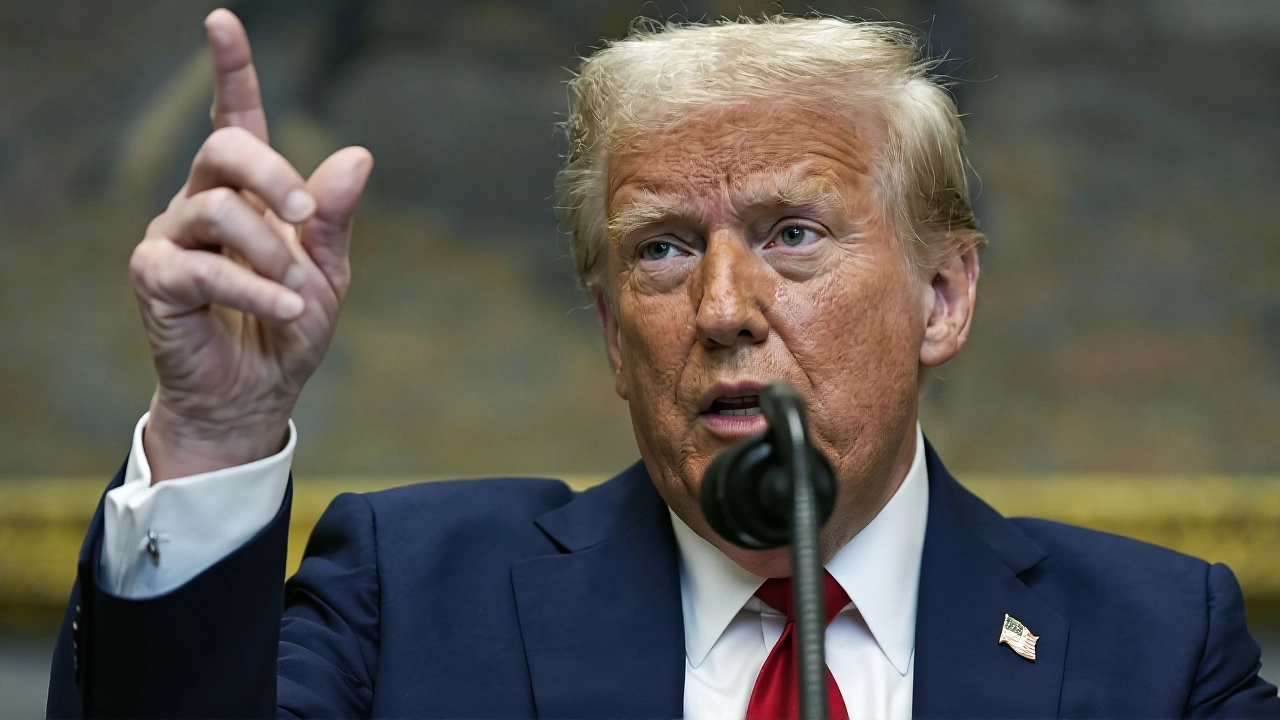When Prime Minister Narendra Modi stepped into the White House on February 13, 2025Washington, D.C., hopes were high. The U.S.-India COMPACT was unveiled—a bold framework for military, tech, and commercial cooperation. Modi, the fourth world leader to meet President Donald J. Trump after his second inauguration, walked away with promises of partnership. But by August, those promises had turned to tariffs. On August 7, 2025, the U.S. slapped a 50% tariff on most Indian imports. Not just any tariff. The highest on any major U.S. ally.
From Optimism to Overnight Reversal
The shift was jarring. Just months before, the U.S. Trade Representative (USTR) had called India a "strategic partner." The U.S.-India COMPACT was meant to signal trust. But behind the handshake photos, economic tensions were boiling. In 2024, the U.S. ran a $45.7 billion goods trade deficit with India—a 5.1% jump from 2023. The President Donald J. Trump had signed his America First Trade Policy memorandum months earlier, directing agencies to target persistent trade gaps. By April, he’d imposed a 10% baseline tariff on all nations, then layered on higher rates for countries with the biggest deficits. India, unsurprisingly, was near the top of that list.The Russian Oil Factor
The 50% tariff wasn’t arbitrary. It was two layers: a 25% baseline penalty for India’s trade imbalance, and another 25% added specifically because India kept buying Russian oil—even after Moscow’s invasion of Ukraine. The World International Trade Advisors (WITA) called it "a punitive escalation," noting the U.S. average tariff had jumped from 2.3% in 2024 to 23% by mid-2025. For India, the impact was immediate. Exports to the U.S. fell 37% between May and September 2025. Textiles, pharmaceuticals, engineering goods—sectors that once grew steadily—now faced near-total collapse in key markets."It feels like a sanction," said a New Delhi-based textile exporter, speaking anonymously. "We’re not being treated like a partner. We’re being treated like a problem to be solved."
India’s Balancing Act
New Delhi is caught between economic survival and geopolitical loyalty. India’s Commerce and Industry Minister Piyush Goyal has repeatedly insisted negotiations are "at an advanced stage." But what’s being negotiated? A deal that lets India keep buying Russian crude? Or one that forces it to choose between energy security and access to the world’s largest consumer market? The Make in India initiative, meant to boost domestic manufacturing, now clashes directly with Trump’s America First Trade Policy, which demands reciprocal access and punishes perceived non-reciprocity."President Trump’s policy assumes trade is a zero-sum game," said Dr. Anjali Mehta, a senior fellow at the Observer Research Foundation. "Modi’s government still believes it can be a win-win—by offering tech partnerships, defense cooperation, and a market of 1.4 billion people. But right now, the U.S. isn’t listening to the offer. It’s only counting the deficit."

The Strategic Paradox
Here’s the twist: both countries still see each other as critical in countering China. The Quad alliance, intelligence sharing, and defense deals—from F-35 components to missile tech—are moving forward. But economic policy is unraveling the trust. The Federal Register document from April 2025 didn’t mince words: non-reciprocal trade practices, it said, were "undermining U.S. competitiveness, leading to business closures, job losses, and an atrophying of our defense industrial base." So the U.S. is punishing India for not buying less Russian oil—while relying on India to buy more American arms. The contradiction isn’t lost on Indian officials. "We’re being asked to choose between our energy needs and our export markets," said a senior Indian trade official. "That’s not partnership. That’s blackmail."What’s Next?
Negotiations continue, but with little public progress. The USTR still insists the Terms of Reference for the Bilateral Trade Agreement are "a critical step forward." But without a freeze—or rollback—on the 50% tariff, any deal will feel hollow. India is now exploring alternatives: deepening trade ties with the UAE, Saudi Arabia, and Southeast Asia. Some Indian firms are even rerouting exports through Vietnam and Malaysia to bypass the tariffs.Meanwhile, the U.S. Chamber of Commerce is quietly lobbying for relief. American agribusinesses and tech exporters are losing access to one of the fastest-growing markets on Earth. "We’re not asking for charity," said a senior U.S. lobbyist. "We’re asking for sanity."

Behind the Numbers
- $45.7 billion: U.S. goods trade deficit with India in 2024 (up $2.2 billion from 2023) - 50%: Combined tariff on Indian imports effective August 7, 2025 - 37%: Decline in Indian exports to the U.S. from May to September 2025 - 23%: Average U.S. tariff rate in April 2025 (up from 2.3% in 2024) - 10%: Baseline tariff imposed on all countries on April 2, 2025 The numbers don’t lie. But they don’t tell the whole story. Behind them are factories slowing down, workers laid off, and a strategic partnership that’s fraying at the seams—not from war, but from wallets.Frequently Asked Questions
How are Indian exporters coping with the 50% U.S. tariffs?
Many Indian exporters are rerouting goods through third countries like Vietnam and Malaysia to avoid the 50% tariff. Textile and pharmaceutical firms are also shifting focus to markets in the Middle East, Africa, and Southeast Asia. Some are absorbing costs temporarily, but profit margins have shrunk by up to 60% in affected sectors. The Indian government has launched a $500 million export diversification fund to help firms transition.
Why did the U.S. impose a 25% penalty specifically on India’s Russian oil purchases?
The Trump administration framed the penalty as a response to India’s continued energy imports from Russia after the 2022 invasion of Ukraine. While the U.S. didn’t sanction India, it used trade policy as leverage to pressure New Delhi into reducing Russian oil purchases. The move was part of a broader strategy to isolate Russia economically, even if it meant alienating a key democratic partner.
Is there any chance the tariffs will be lifted soon?
Unlikely before the 2026 U.S. midterm elections. The White House views the tariffs as a political tool to appeal to manufacturing voters in swing states. Any rollback would require India to make major concessions—such as reducing tariffs on U.S. agricultural goods or agreeing to a cap on Russian oil imports. So far, New Delhi has resisted both. Talks remain open, but progress is slow.
How does this affect American businesses and consumers?
U.S. companies that rely on Indian inputs—like pharmaceutical active ingredients, textiles, and IT services—are seeing costs rise. Consumers may face higher prices on generic drugs and apparel. The U.S. Chamber of Commerce estimates the tariffs could cost American businesses $8.2 billion annually in lost exports and supply chain disruptions. Tech firms are also delaying investments in India due to uncertainty.
What role does China play in this trade conflict?
China is the unspoken backdrop. Both the U.S. and India see each other as counterweights to Beijing’s influence. But while security ties deepen—through joint drills and defense tech deals—the economic rift grows. The U.S. wants India to align economically as well, but India refuses to choose between its energy needs and its export markets. The result is a strategic partnership with a growing economic fault line.
What’s the long-term outlook for U.S.-India trade?
The long-term outlook hinges on whether the U.S. can shift from punitive tariffs to structured negotiation. India’s economy is too large to ignore, and its tech and manufacturing potential too valuable. But if the 50% tariff remains, bilateral trade could shrink by 40% by 2027. Both sides need to find a middle ground—perhaps a phased tariff reduction tied to measurable reforms in market access and intellectual property protection.
